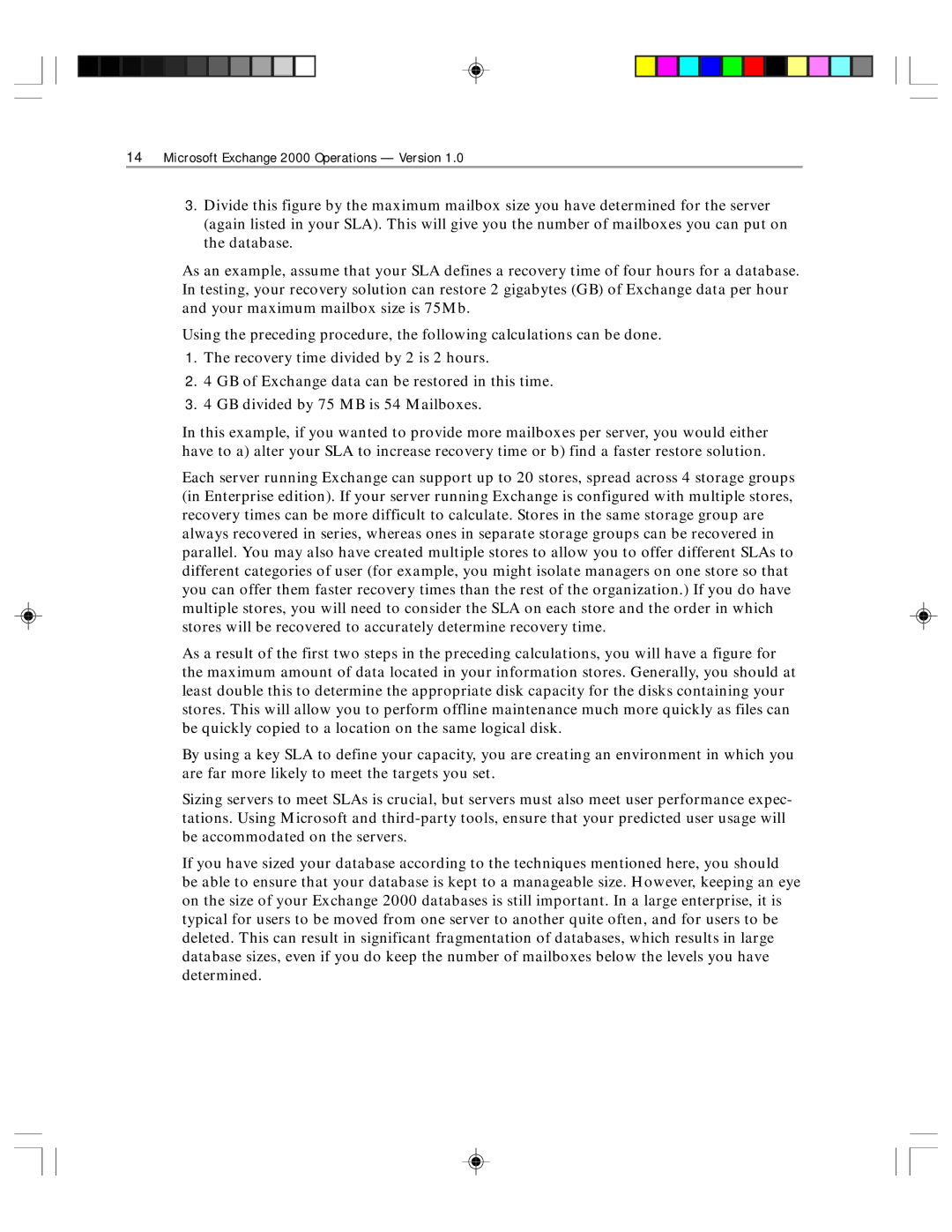
14Microsoft Exchange 2000 Operations — Version 1.0
3.Divide this figure by the maximum mailbox size you have determined for the server (again listed in your SLA). This will give you the number of mailboxes you can put on the database.
As an example, assume that your SLA defines a recovery time of four hours for a database. In testing, your recovery solution can restore 2 gigabytes (GB) of Exchange data per hour and your maximum mailbox size is 75Mb.
Using the preceding procedure, the following calculations can be done.
1.The recovery time divided by 2 is 2 hours.
2.4 GB of Exchange data can be restored in this time.
3.4 GB divided by 75 MB is 54 Mailboxes.
In this example, if you wanted to provide more mailboxes per server, you would either have to a) alter your SLA to increase recovery time or b) find a faster restore solution.
Each server running Exchange can support up to 20 stores, spread across 4 storage groups (in Enterprise edition). If your server running Exchange is configured with multiple stores, recovery times can be more difficult to calculate. Stores in the same storage group are always recovered in series, whereas ones in separate storage groups can be recovered in parallel. You may also have created multiple stores to allow you to offer different SLAs to different categories of user (for example, you might isolate managers on one store so that you can offer them faster recovery times than the rest of the organization.) If you do have multiple stores, you will need to consider the SLA on each store and the order in which stores will be recovered to accurately determine recovery time.
As a result of the first two steps in the preceding calculations, you will have a figure for the maximum amount of data located in your information stores. Generally, you should at least double this to determine the appropriate disk capacity for the disks containing your stores. This will allow you to perform offline maintenance much more quickly as files can be quickly copied to a location on the same logical disk.
By using a key SLA to define your capacity, you are creating an environment in which you are far more likely to meet the targets you set.
Sizing servers to meet SLAs is crucial, but servers must also meet user performance expec- tations. Using Microsoft and
If you have sized your database according to the techniques mentioned here, you should be able to ensure that your database is kept to a manageable size. However, keeping an eye on the size of your Exchange 2000 databases is still important. In a large enterprise, it is typical for users to be moved from one server to another quite often, and for users to be deleted. This can result in significant fragmentation of databases, which results in large database sizes, even if you do keep the number of mailboxes below the levels you have determined.
